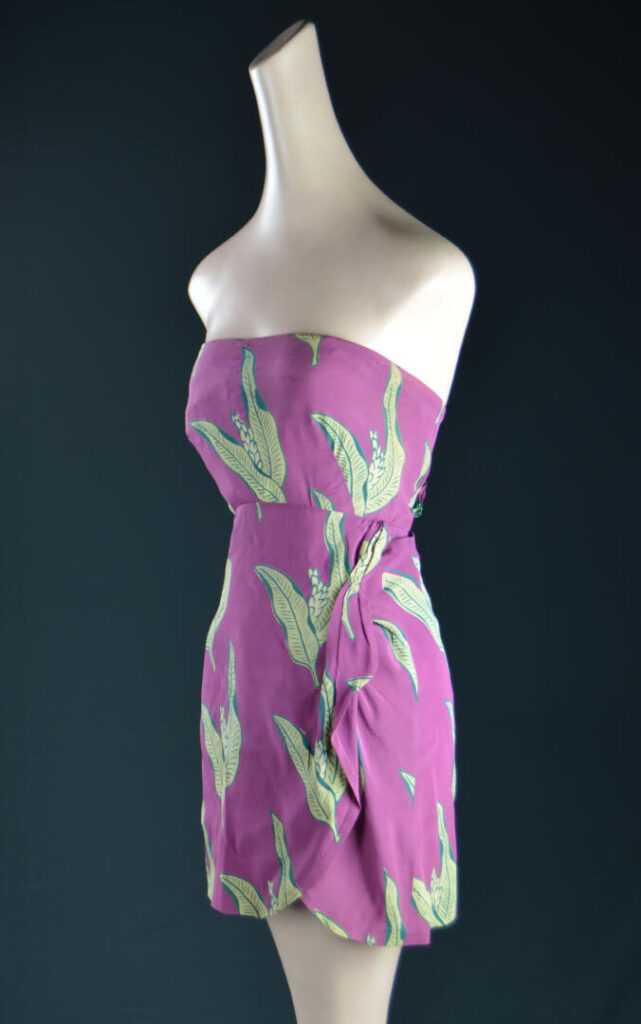Costume worn by Dorothy Lamour as Aloma in the film “Aloma of the South Seas”, 1941
The Collection of Motion Picture Costume Design: Larry McQueen
Visual Description: This is a short, strapless fuchsia dress featuring a pattern of pale-green tropical leaves outlined in jade green. Some of the skirt’s fabric is gathered along the right side of the dress and drapes down and across the body, creating a tulip-shaped hem.
Extended Label Text: Head rarely designed costumes with prints, believing they could make an outfit look dated only a year later. One of her most trendsetting and lasting designs, however, was this boldly printed wraparound sarong she designed for Dorothy Lamour in Aloma of the South Seas (1941).
The sarong Head created for Lamour was far from authentic. Traditional sarongs were made from cotton fabric tied at the waist, leaving the breasts exposed. With this not an option for Hollywood, Head used satin crepe (which draped better than cotton) and added a pair of matching undershorts. The sarong instantly affected the bathing suit industry worldwide.
————————————————————————————————————————————————-
Traje usado por Dorothy Lamour como Aloma en la película “Aloma del Mar del Sur”, 1941
La Colección de Diseño de Vestuario Cinematográfico: Larry McQueen
Descripción Visual: Este es un vestido corto fucsia sin tirantes que presenta un patrón de hojas tropicales de color verde pálido delineadas en verde jade. Parte de la tela de la falda está fruncida a lo largo del lado derecho del vestido y cae hacia abajo y a lo largo del cuerpo, creando un dobladillo en forma de tulipán.
Texto de Etiqueta Ampliado: Head rara vez diseñaba vestuario con estampados, creyendo que podían hacer que un atuendo pareciera anticuado solo un año después. Sin embargo, uno de sus diseños más innovadores y perdurables fue este sarong (falda) envolvente con un estampado llamativo que diseñó para Dorothy Lamour en Aloma del Mar del Sur (1941).
El sarong que Head creó para Lamour estaba lejos de ser auténtico. Los sarongs tradicionales se confeccionaban con tela de algodón atada a la cintura, dejando los pechos al descubierto. Dado que esto no era una opción para Hollywood, Head utilizó crepé satinado (que cubría mejor que el algodón) y agregó un par de calzoncillos a juego. El sarong afectó instantáneamente a la industria de trajes de baño en todo el mundo.




